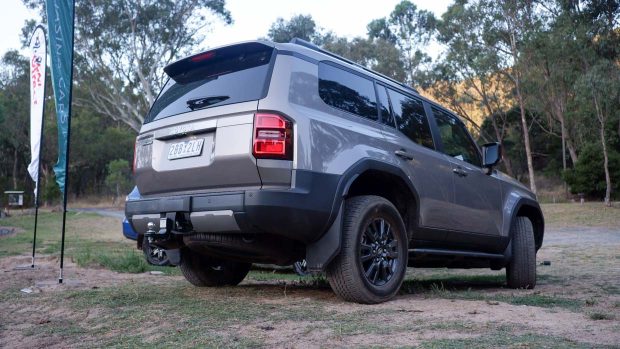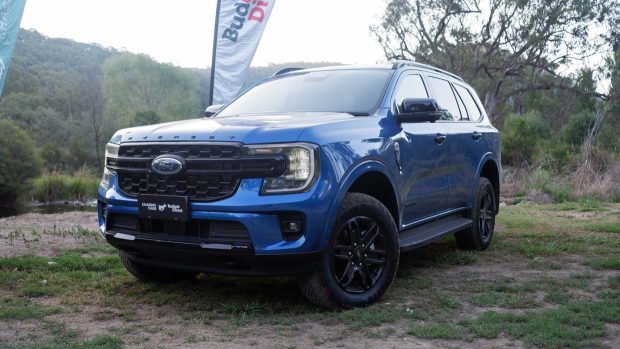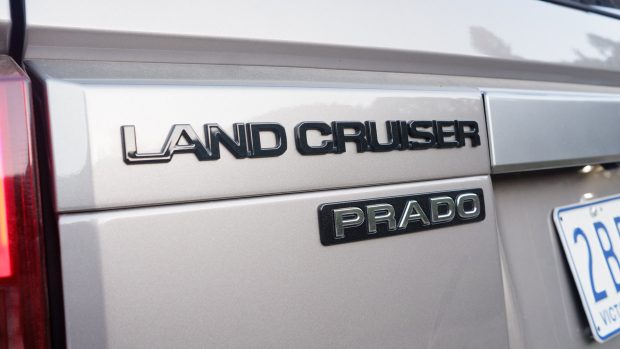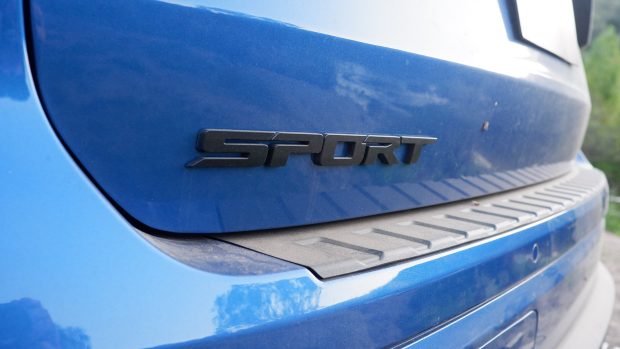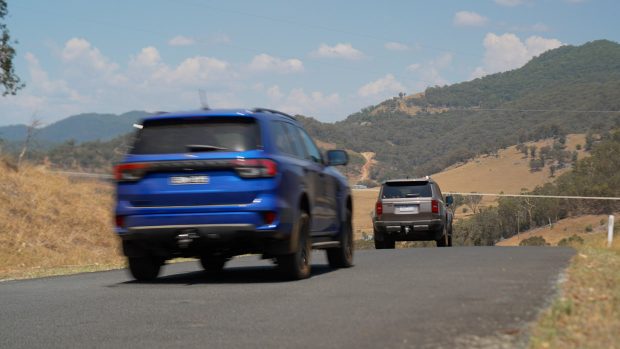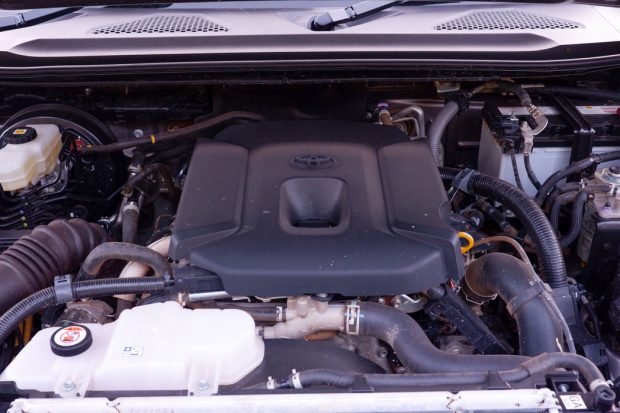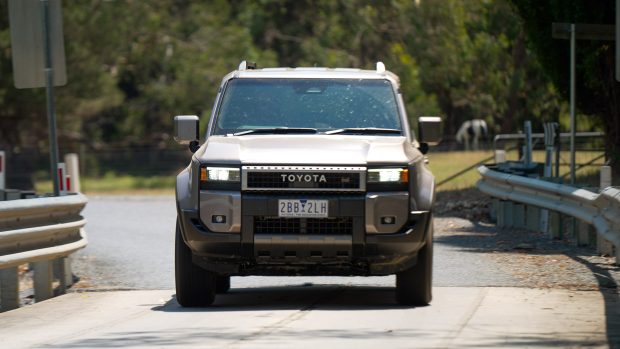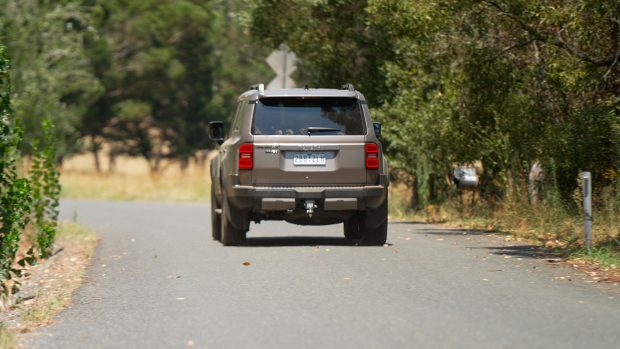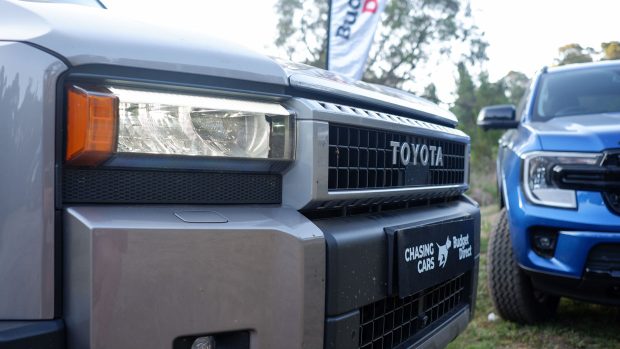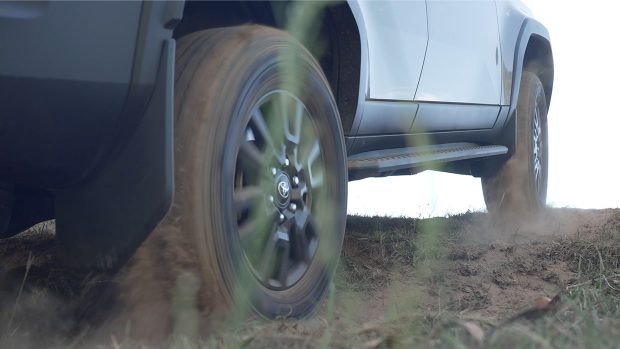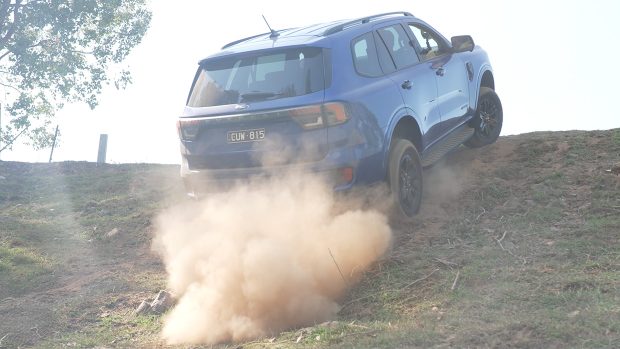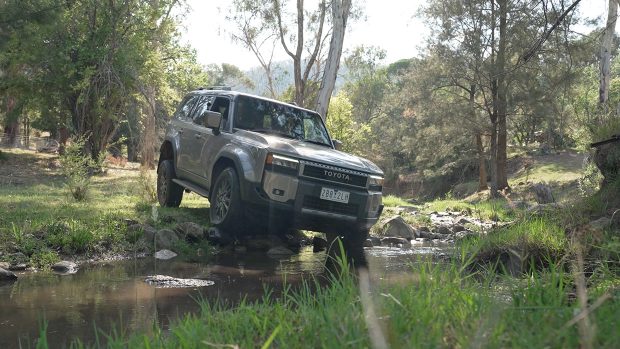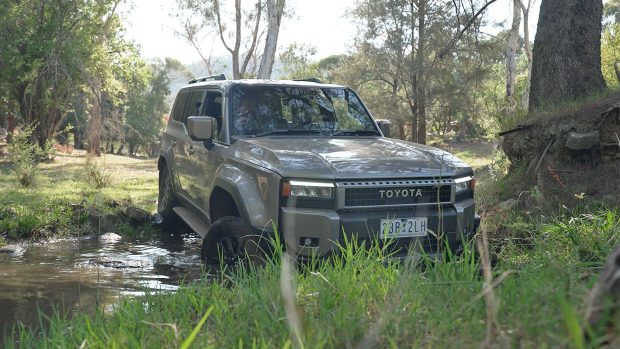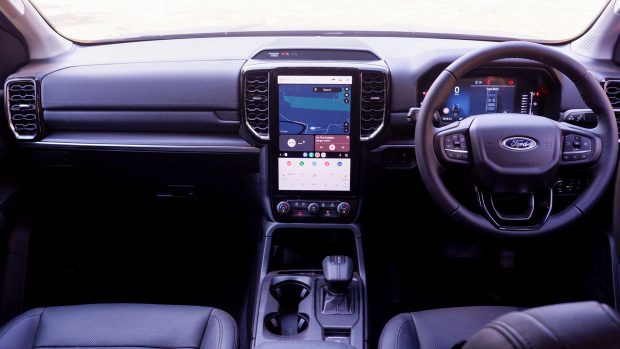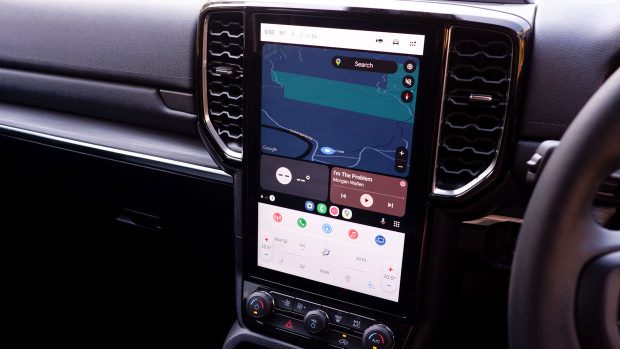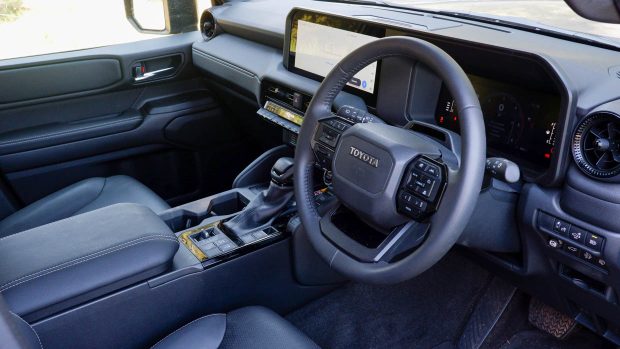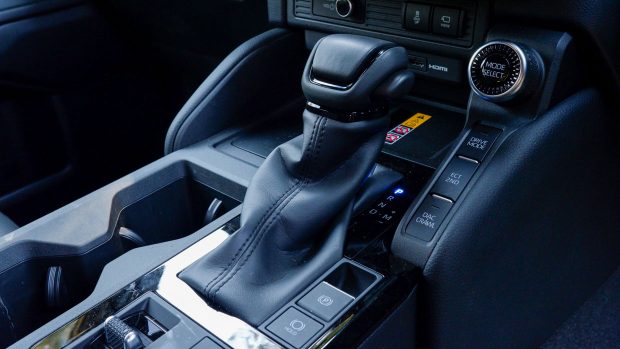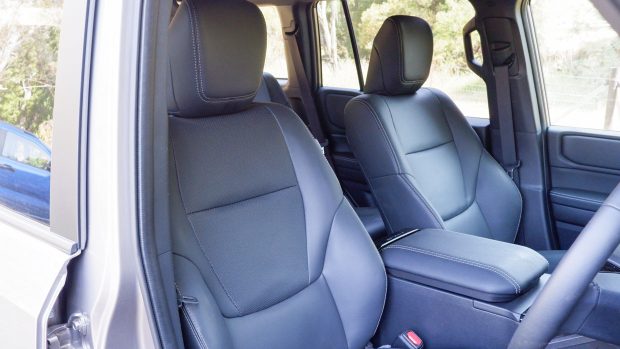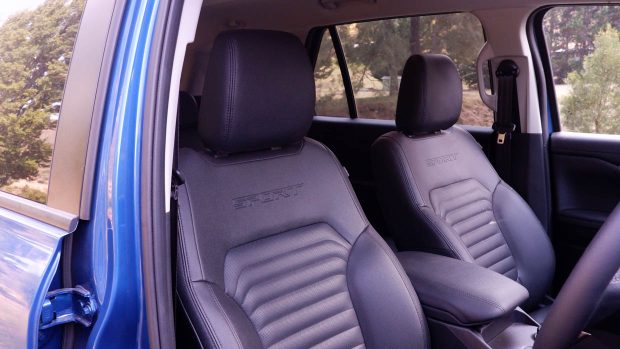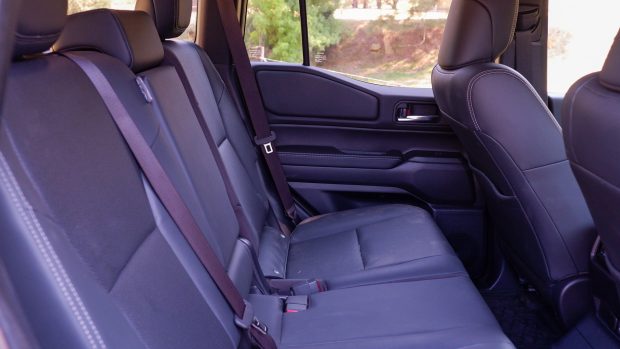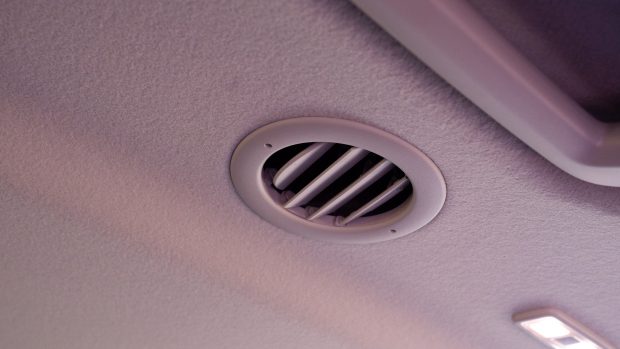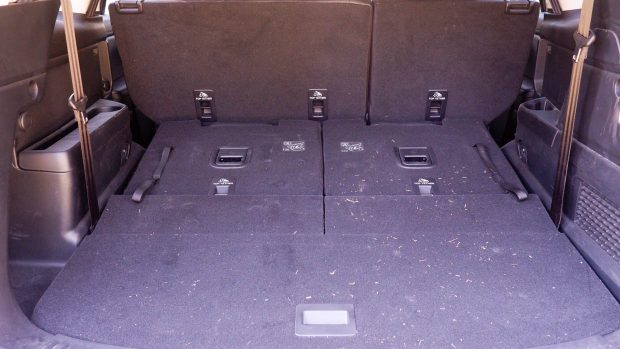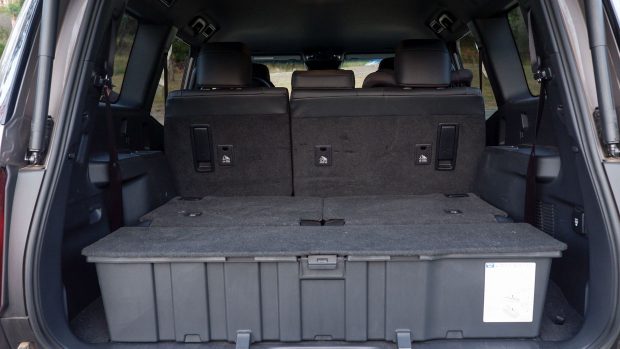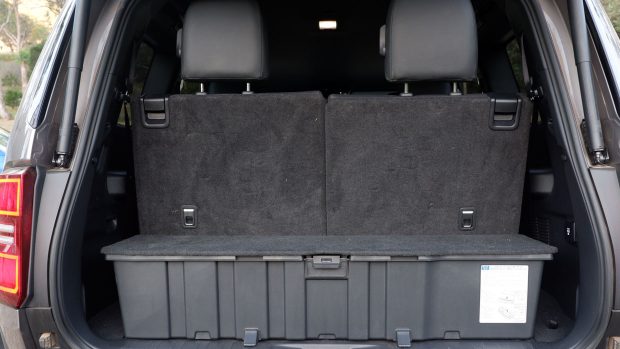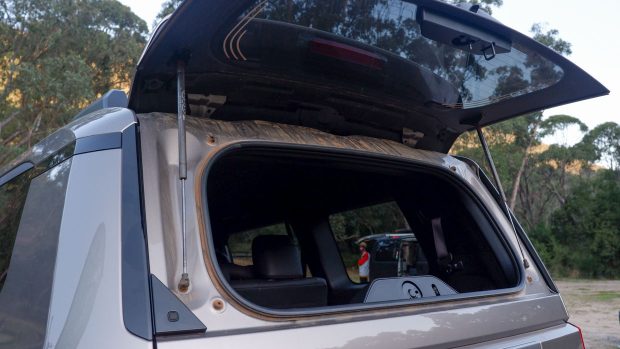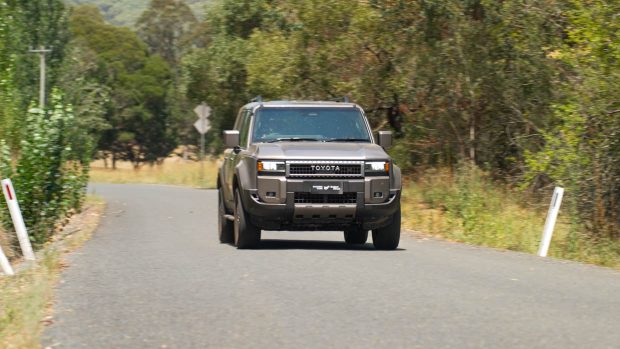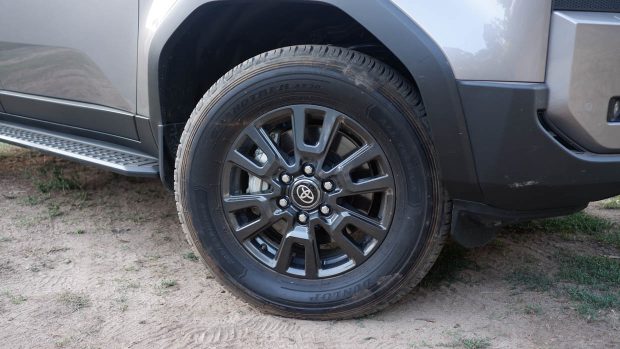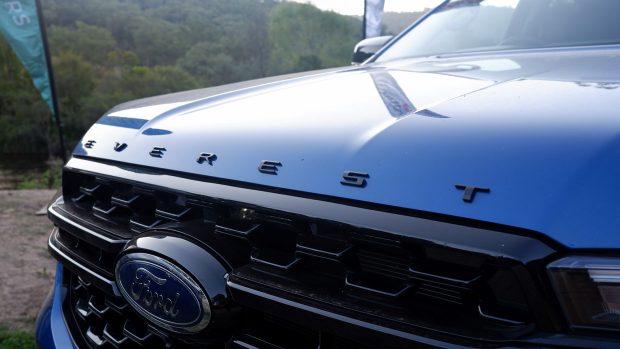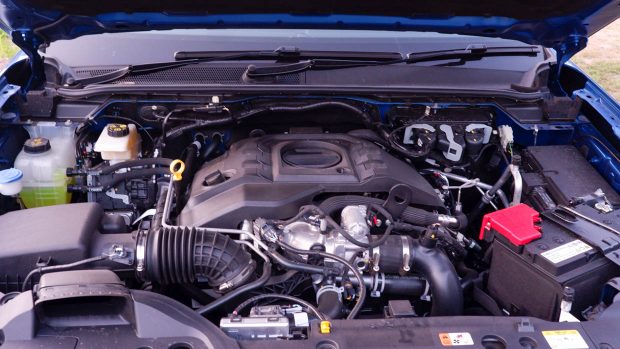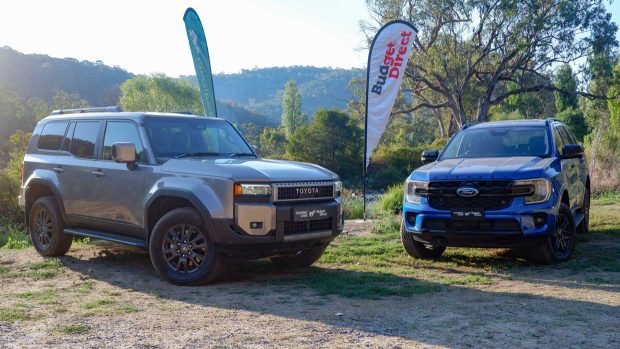-
Car Reviews
- Car News
-
Car Comparisons
Latest comparisons
- Chasing Deals
Much hype and criticism has been leveled against the newly related Toyota Prado while the Everest is Ford’s quiet success story, so which is best?
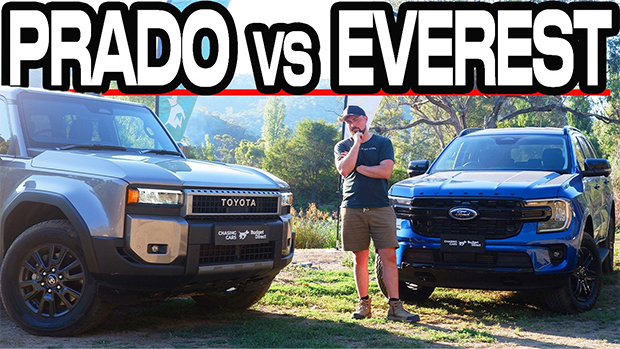
Fifteen years is a hell of a long time between drinks, even for Toyota.
Time enough for a whole new nameplate to emerge, birth a second generation that genuinely moves the game forward, and make you wonder if perhaps Toyota’s waited just a bit too long. The vehicle in question is, of course, Ford’s Aussie-engineered Everest.
Along with the Toyota Prado, the two have dominated the ladder-frame large SUV segment of late. The Everest achieved a scorcher of a sales year in 2024, shifting over 26,494 units and it did so, at least in part, because it simply raised the game.
The availability of a stonking diesel-fed V6 engine, Prado-beating 3.5-tonne towing capacity, and level of fit and finish, along with driving refinement that we’ve rarely seen from a Thai-built vehicle, is what made the Everest a success.
The Everest made the 150 Series Prado feel tired, and many expected the arrival of the 250 Series would signal Toyota taking back the throne. But despite its premium 300 Series-sourced GA-F platform, the Prado’s compromised boot and carry-over four-cylinder have been heavily criticised. Not all clear for Prado, then.
For a definitive verdict on whether Prado or Everest rules the roost in 2025, we conducted an exhaustive road test. Covering over 1000km of urban, rural, and motorway driving with some challenging off-road tests thrown in for good measure, we’ve managed to pick a winner.
The glittered-up off-road trims of the Prado (Altitude) and Everest (Tremor) catch all the attention, but we’re interested in what Australians are buying in the real world.
In Toyota-land, that sees the fleet-spec five-seat GX ($72,500, before on-road costs) skipped in favour of the everyman GXL. It’s the second off the bottom of the range and asks for $79,990, or about $88,000 once you add driveaway costs in NSW and add on the Dusty Bronze paint as per our test vehicle.
Highlight features of the GXL include:
Ford’s Everest is an all-together different package, with the Thai-built wagon offering a distinct pricing advantage over the Japanese Prado. Skip the twin-turbo four-banger and RWD models, though, because the V6 is where it’s at.
Aussie buyers seem to go for the sensible Everest Sport V6, which asks $74,640 before on-roads, rounding out to $82,600 driveaway when dressed in the handsome Blue Lightning paint seen here. That’s a $5000 advantage to the Everest already.
Highlight features of the Sport V6 include:
Our Everest was fitted with 18-inch alloy wheels wrapped in all-terrain tyres, which is a no-cost option.
When it comes to the drive experience, little disappointment is to be found with either vehicle. Both the Ford Everest and Toyota Prado are well-suited to Aussie roads yet have entirely different personalities.
The Everest is balanced and sporty in its demeanour, with a pointy front end when compared to the Prado, despite lugging around two extra cylinders. Decidedly car-like, the Everest Sport has a firm-but-compliant ride.
It’s remarkable how different the two feel in terms of size, with the 57mm wider stance and 76mm longer body of the Prado making the Everest the easier of the two to thread around suburban streets. In the same vein, it feels less scary when encountering oncoming traffic on narrow country laneways.
As we experienced in our long-term Ford Ranger test, the Everest’s 184kW/600Nm turbo-diesel V6 matched with the 10-speed automatic is a sublime combination. Effortless at low and high-speeds alike, the Everest is a seriously competent touring machine.
In stark contrast, gathering speed in the Toyota Prado is frighteningly leisurely. Not good for overtaking on country roads.
Toyota has carried over the venerable 1GD 2.8L turbo-diesel four-cylinder from the 150 Series Prado. Apparently there are many changes, yet it produces the same 150kW and 500Nm as its predecessor. Toyota’s V-Active mild-hybrid uses an 8.4kW/65Nm electric motor to fill torque gaps.
While the new eight-speed automatic transmission does offer two extra ratios over the 150, it’s not enough to counteract the 250 Series GXL’s 270kg weight penalty over the old Prado. It means the 1GD needs to work a lot harder.
Having recently driven the Prado’s luxury twin, the Lexus GX with its 260kW/650Nm twin-turbo petrol V6, I can confirm the 3.5L engine is much quieter and offers the grunt the model desperately needs.
On the whole, the 2.8L four’ feels really quite underdone for a vehicle this size, especially for one said to be capable of pulling an extra 3.5-tonne behind it.
It is a shame because the Prado is so compliant and composed at high speeds with lovely light and accurate steering, though it has some serious body roll in the corners.
The Prado benefits from the TNGA-F ladder frame chassis shared with full-size rigs like the 300 Series Land Cruiser and the Tundra pickup.
Feeding power to the Prado’s wheels is a permanent four-wheel-drive system, sending a consistent 40:60 torque split to the front and rear wheels in its default setting. Operation was smoother than the Everest’s on-demand setup.
The Prado GXL’s 615kg payload brings cause for concern. Down from 725kg in the old 150 Series GXL, despite having a 500kg greater towing claim. In simple terms, with four 80kg people on board, the Prado only has 295kg left over for luggage, vehicle accessories and whatever else you need.
The Everest Sport V6 is marginally better at 703kg. Both will require a GVM upgrade for serious van-hauling with a car full of people and stuff.
While visibility is a strong suit in both vehicles, the Prado loses some points for its narrow mirrors that make merging a real challenge.
It also loses marks for its puny LED headlights that pale in comparison to the Everest Sport’s. While there is an option to go for ‘bi-LED’ headlights further up the Prado range, there’s no sophisticated technology like Matrix LEDs like you’ll find on the Everest Platinum.
But what about off the tarmac? For that, I hand over the keyboard to our off-road expert Evan Spence.
Off-road conditions are really what sets these vehicles apart. It’s clear that the Everest was designed to be a car first, and a four-wheel drive second — and I don’t mean that in a negative way.
The Prado just felt much more at home when the road ends. That soft suspension which lumbered around corners excels over corrugated dirt sections, soaking up imperfections with utter ease. The Everest, on the other hand, feels firmer — dare I say sportier — which results in a less confident ride on faster imperfections.
Whoever designed the traction control system in the 250 Series Prado deserves a pay rise and a day off, because it’s first class. This is one four-wheel drive where you simply don’t need diff locks.
The Everest, on the other hand, needed its rear diff lock on our off-road test, thanks to less suspension travel, and a traction control system that isn’t calibrated as well as the Prado’s.
Bring on Rock Mode, or a front diff lock as per the Ranger Raptor, and it would transform the Everest’s off-road abilities.
Clearance also seemed to be a limiting factor in the Everest. I managed to tag the rear bumper on a rock that saw it transform into a two-piece item. Thankfully, it was easy to clip back together. The Prado had no issues there.
Gearing wise, both 4x4s had enough low-range reduction to work effectively off-road. At no stage was Hill Descent Control needed on our steep test course. Everest had the advantage here however, thanks to a 10-speed transmission which provides a gear for every occasion.
Naturally, the Prado has a much larger touring range thanks to the included 110L fuel capacity versus the 80L tank in the Everest, which really is on the small side for a touring four-wheel drive.
In summary, both of these seven-seater four-wheel drive wagons are comfortable, capable and practical as four-wheel drives.
The Everest is a better car, and incorporates clever technology for novice off-roaders to assist when negotiating tough terrain. The Prado just did it easier off-road. Is that enough to give the Prado the win, though?
The cabins of the Prado and Everest are both impressive in their own right, though the pair take a decidedly different approach; the Ford leaning into the tech-heavy fashion-forward look while the utilitarian Toyota can be operated entirely with a closed fist.
Kicking things off with the suave Everest, the cabin packs everything you need and enough luxuries to help justify the price point.
The portrait 12.0-inch touchscreen is intuitive to use, and doubles down on convenience by offering wireless Apple CarPlay and Android Auto combined with wireless phone charging; a combination shared with the Prado.
Ford only offers an eight-speaker stereo on the Sport grade which is perfectly serviceable but I did long for the Platinum’s delightful B&O sound system.
Equally, it’s easy to love the Prado’s interior with its chunky buttons, entirely separate climate control and traditional landscape orientation of the 12.3-inch touchscreen and quirky details like the ability to plug in an HDMI cord.
The Prado’s stereo is utterly underwhelming, however, and offers strong motivation to seek out the JBL unit further up the range.
The seats are heated and cooled on both models, which complement the pair’s impressive air-conditioning systems that were effective enough to ward off muggy 37-degree temperatures during testing.
Five straight hours in the saddle was enough time for us to determine that the Everest had inferior back support when compared to the Prado’s more shapely and softer seats, though the former does offer lumbar support that narrows the comfort gap somewhat.
Curiously, while the Ford’s steering wheel is wrapped in slightly nasty synthetic leather, there’s real cow-hide on the seats. The Prado swaps this around and to better effect, with surprisingly supple fake leather seats and genuine hide on the wheel.
The same cannot be said for material quality elsewhere in the Prado’s cabin, however, with rock hard door tops leaving the driver without a comfortable place to rest their arm on a long drive.
Row two reveals a good amount of space in both vehicles, even sitting behind my driving position at 182cm tall. Similar to the front row, the Prado’s bench offers more seat bolstering and shape than Everest for greater back support, though neither are fantastic.
Both feature roof-mounted air vents in the second and third rows and the usual litany of USB ports and convenient cupholders.
We tested rear-facing baby seats in the pair and found that both were only average. The Prado and Everest both forced significant compromise to the seating position of the front passenger when compared with a more traditional SUV like a Toyota Kluger. It’s serviceable, but not ideal.
Toyota ditched the ability to slide the second row forward for the new-generation Prado though it does feature a tumble function that makes getting into the third row easier than the Everest.
The third row is best avoided if you’re an adult. The high floor of these ladder-frame vehicles means your legs are going to sit very high.
Finally, the boot situation. The Everest wins hands-down, here, the space measuring 898L in five-seat configuration and 259L in seven-seat mode. Even in the latter, it’s large enough to handle a few school bags.
As you’ve no doubt heard, the Prado’s boot is a bit of a mess in Australia, with claimed 906L and 182L volumes with five/seven seats up. Toyota (cheekily) measures up to the roof, not the window line as per Everest. That’s why the Ford’s boot looks bigger — because it is.
The clumsy housing of a 48-volt mild-hybrid system in the Prado has meant the floor height has been raised considerably and the third row doesn’t fold into the floor, unlike a Lexus GX or even a Japan-spec Prado which lack this electrical assistance.
The lifted load level will be a challenge for shorter buyers — and honestly tall buyers, too — while the litany of holes and crevices in and around the boot area will be a nightmare for families. Some gaps, such as between the folded third-row and the second-row seats, are large enough to swallow a whole bag!
At least the Prado makes loading a bit easier with its snappy fold-out tailgate glass, just like a BMW 3 Series Touring.
The Toyota Prado and Ford Everest were both awarded five stars by ANCAP. The Everest was given its gong under slightly more lenient 2022 testing protocols, while the Prado was tested more recently in 2024 under stricter regulations.
Each scored the following sub-results in testing:
Prado:
Everest:
Both models come with all the expected long list of safety equipment and in practice they work quite well, though the Everest’s lane-keep assistance can be overzealous.
The Prado impressed with a subdued driver monitoring system in stark contrast to many recently launched new cars. The Everest is not equipped with such a system.
It would be remiss to not mention however that both the Everest and the Prado in their corresponding Sport and GXL grades do not offer tyre pressure monitoring, which is astounding at this price point.
After all, what could be more critical to the safety of the vehicle than knowledge of the condition of the tyres? This tech should not be reserved for top-spec trims.
The Ford Everest and Toyota Prado are each covered by a five-year, unlimited-kilometre warranty.
Servicing intervals for the Prado are rather short at six months or 10,000km, whatever comes first. The Everest is notably longer at 12 months or 15,000km.
Ford caps the price of servicing the Everest V6 at $1516 over four years, though if you opt for a pre-paid servicing plan at purchase an extra year is thrown in for free.
With servicing required at least twice as often, the Prado is considerably more expensive to own at $3900 over five years.
In terms of fuel economy, the Everest V6 pays with its power with a slightly thirsty combined consumption rating of 8.5L/100km while the Prado’s mild-hybrid assisted four-cylinder drinks less at 7.6L/100km.
Given the Ford’s smaller 80L tank and the Prado’s mammoth 110L tank, this works out 941km of range in the Everest while the Toyota stretches out to an astonishing 1447km.
AdBlue is also a consideration for both of these vehicles (and any new diesel going on sale today, really) but despite the Everest and Prado’s similar tank sizes (18L and 17.4L), Ford says its model should stretch out to 15,000km between refills, while the ’Cruiser won’t even make it to service time and needs attention around the 8500km mark.
Picking between these two vehicles ended up being a tricky decision. What’s clear is that the Prado remains the choice for the off-road dedicated. Clever traction control and plush suspension assure that.
But when thinking about how most people are going to use each of these 4×4 wagons — they’re not the Altitude or Tremor, after all — the fate of our overall loser came as the result of a thousand cuts and lack of innovation.
The Prado falls down in a key area, in its role as a family car. In seven-seat guise, the lack of sliding second row is annoying but payload figures and woeful boot design speak to a vehicle that simply isn’t as good as it could be.
But the Everet doesn’t just take the win because the Prado has tripped up. A consistent and comprehensive offering with a lusty diesel V6 engine, the Ford Everest Sport V6 is an attainable, desirable and practical package.
| Good points | Needs work |
| Excellent off-road capability | Needs more grunt |
| High-speed stability | Shockingly poor boot design |
| Larger 110L fuel tank | Meagre payload |
| Solid safety package | Expensive and frequent servicing |
| Good points | Needs work |
| Lusty V6 diesel | Boot usability |
| Solid off-road ability | Off-road traction control |
| Affordable purchase price | Small 80L fuel tank |
| Spacious boot | Cheap materials in places |
Latest comparisons
About Chasing cars
Chasing Cars reviews are 100% independent.
Because we are powered by Budget Direct Insurance, we don’t receive advertising or sales revenue from car manufacturers.
We’re truly independent – giving you Australia’s best car reviews.
